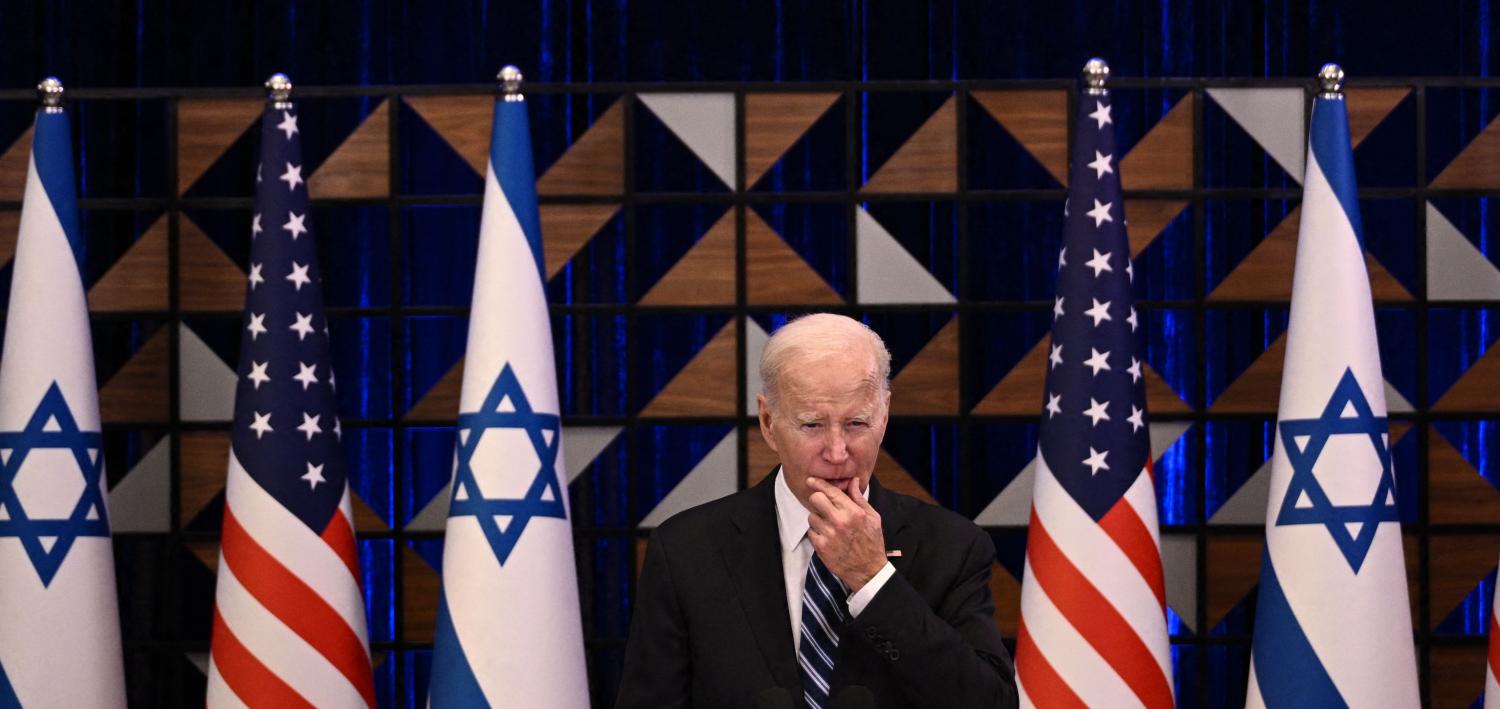The hostilities in Gaza are the most recent in a long line of events bedevilling American efforts to shift resources from the Middle East to higher priority theatres. Slightly below the radar, the United States faces a more novel headache in the form of Chinese efforts to construct military facilities in the United Arab Emirates and Oman.
Re-tooling America’s security and diplomatic posture to counter China has been a core priority ever since President Barack Obama’s 2011 “Pivot to Asia” pledge. The Pivot’s metaphorical imagery did much to excite the fears of US partners in the Middle East. Later, the policy was described as a “re-balance”, which more accurately reflected the intent.
On some counts, the United States has been quite successful. It has largely ended direct involvement in Middle Eastern wars and moved military assets out of the region. The Biden administration has adeptly managed to “walk and chew gum”, scoring several significant breakthroughs in Asia while leading the Western response to the Ukraine war and lower level crises in the Middle East predating October.
Yet, the Middle East continues to occupy an incommensurate and possibly unsustainable share of American bandwidth given the scale of challenges faced elsewhere. Cases in point are the itineraries of key officials, composition of US military financing and the presence of up to 60,000 US troops.
From the rise of ISIS to the latest Israeli-Palestinian conflagration, events keep frustrating the realisation of a more enduring shift. An added complication could yet prove to be the delaying of Israel-Saudi normalisation. US officials had hoped normalisation would allow Israel to play a greater role in providing for Saudi Arabia’s security – much as it has done with the UAE – through initiatives including regional air defence integration.
China’s quest to establish bases in the Gulf marks a qualitatively new challenge. Washington has long been advantaged by the fact that few countries outside the region, except for European allies, had the means or intent to establish a military footprint.
Russian facilities in Syria and proposed bases in Libya and Sudan have unnerved Western capitals, but unlike the UAE and Oman, these countries do not host Western forces. The UAE is a critical node in the US regional military network; it and Oman have the added strategic importance of abutting the Strait of Hormuz, through which 20 per cent of global oil and LNG shipping passes every year.
After helping to midwife a limited Saudi-Iran normalisation earlier this year, there are signs that Beijing’s basing proposals are being treated seriously.
Earlier this year, US intelligence detected renewed Chinese construction work at Khalifa Port, roughly 50 kilometres from America’s sprawling Al Dhafra airbase. This came after UAE officials had ostensibly acceded to US concerns by halting all construction in December 2021.
Meanwhile, Omani officials who met with Chinese counterparts in October 2023 were reportedly “amenable” to requests to build some kind of military facility. These discussions undoubtedly featured when Biden called on Oman’s Sultan Haitham bin Tariq Al Said in early November.
US whack-a-mole efforts may well succeed in dissuading Gulf allies in the short-term. Nonetheless, the pillars undergirding Washington's privileged security position are being steadily eroded.
Washington’s perceived reliability has been badly damaged by its reluctance, on several occasions, to aid Arab allies after Houthi and/or Iranian attacks. Hand-wringing over military sales to the UAE and Saudi Arabia has enhanced the attractiveness of cheaper Chinese military kit. With the United States increasingly energy independent, China has long since eclipsed it as the major purchaser of Gulf hydrocarbons.
Regardless of whether China’s overtures succeed, they have evident strategic utility in making Washington think twice about pulling resources.
To facilitate a leaner Middle Eastern footprint that is both responsible and enduring, the United States will have little choice but to redouble its focus on the region in the immediate future. An Israeli-Palestinian political agreement that would also revivify the Abraham Accords will remain elusive.
A more realistic objective may be to encourage regional efforts at rapprochement with Iran. This would include building on the US-Iran deal allowing limited financial relief in exchange for curtailing aspects of Tehran’s nuclear program. A calmer region may have less incentive to seek Chinese security assistance.
The United States will also demand more of its partners to contribute to regional security. A more robust European posture in the Middle East will be of greater assistance to Washington’s Indo-Pacific goals than NATO sending token frigates to Asia. India will share US disquiet over proposed Chinese facilities. Delhi’s nascent but growing security presence in the region could prove beneficial.
Ultimately, however, the US may have to evaluate what level of Chinese security presence it is prepared to live with. As a major energy importer, there are considerable areas where Beijing and Washington’s interests could overlap.
If the US can take any solace, it is that it remains the only country powerful enough to face such wicked and truly global challenges.

